Have you ever stopped to think about how you, as a human, interact with the environment around you? It’s not just about appreciating a beautiful sunset or feeling the warmth of the sun on your skin. It’s a complex and dynamic relationship that shapes both who we are and the world we live in. From the clothes we wear to the houses we build, our daily actions leave footprints on the environment, just as the environment leaves its mark on us.
Understanding this intricate relationship is crucial, not just for academics and scientists, but for everyone. Why? Because recognizing the human environment interaction definition unlocks a deeper understanding of our challenges, such as climate change and resource depletion. It also empowers us to make informed choices that ensure a sustainable future for ourselves and future generations.
So, let’s embark on a journey to explore the fascinating world of human-environment interactions. In this article, we’ll delve into the core concepts, examine real-world human environment interaction examples, and discover how seemingly small actions can have a ripple effect on the planet. Get ready to learn, reflect, and maybe even chuckle a bit along the way – after all, understanding our relationship with the environment shouldn’t feel like a chore; it’s a chance to appreciate the intricate dance between humanity and nature.
Explaining Human Environment Interaction Definition:
Human environment interaction explores the active relationship between people and their surroundings. It’s like an ongoing waltz, where we adjust to our environment, and in turn, the environment adjusts to us. Think of it like this: we build houses to shelter us from the elements, but those very houses change the landscape and can impact local ecosystems. In the further sections, we will learn more than the Human Environment integration definition. Let’s learn more about this.
What is Human Environment Interaction?
Human environment interaction is exactly what it sounds like how people and their surroundings impact each other. Human Environment Interaction, often shortened to HEI, explores the fascinating relationship between people and their surroundings. It’s a constant push and pull, a bit like a tango (but hopefully with less stepping on toes). We shape our environment, and in turn, it shapes us.
The Core Elements of Human Environment Interaction
To understand this interaction, we need to consider three key elements:
- People: This encompasses individuals, communities, and even entire societies. It’s all about how we, as humans, with our unique needs and desires, interact with the world around us.
- Environment: This includes the natural world, like mountains, landforms, rivers, and forests. It also includes human-made structures and systems, like cities, roads, and farms.
- Interaction: It refers to the diverse ways people adapt to, modify, and depend on their environment. This could be anything from building houses for shelter to creating irrigation systems for agriculture.
Understanding the Active Relationship Between People and Places
Human environment interaction isn’t a one-way street. It’s a continuous exchange, where humans act upon the environment, and the environment, in turn, affects human lives. Think about it: we build dams to control water flow, but that very act can impact ecosystems downstream.
Or, we construct cities that offer opportunities and convenience. But they can also lead to pollution and resource depletion. It’s a delicate dance, figuring out how to meet our needs while respecting the planet’s limits. We’ll delve deeper into the different types of interactions and their consequences in the next section, so stay tuned!
Exploring Human Environment Interaction Examples:
Human environment interaction isn’t just some abstract concept – it’s happening all around us, all the time. Let’s dive into some real-world examples to see how humans and the environment are constantly shaping each other.
Urbanization and its Impact on Natural Landscapes
Think about bustling cities like New York or Hong Kong. These concrete jungles were once natural landscapes, home to diverse ecosystems. As populations grew and cities expanded, forests were cleared, rivers were diverted, and the land was dramatically transformed to accommodate human needs. This is a prime example of how human actions directly impact the environment.
But it’s not always a one-way street. The environment can also shape human behavior. For example, people living in coastal cities might have a stronger connection to the ocean and prioritize marine conservation efforts.
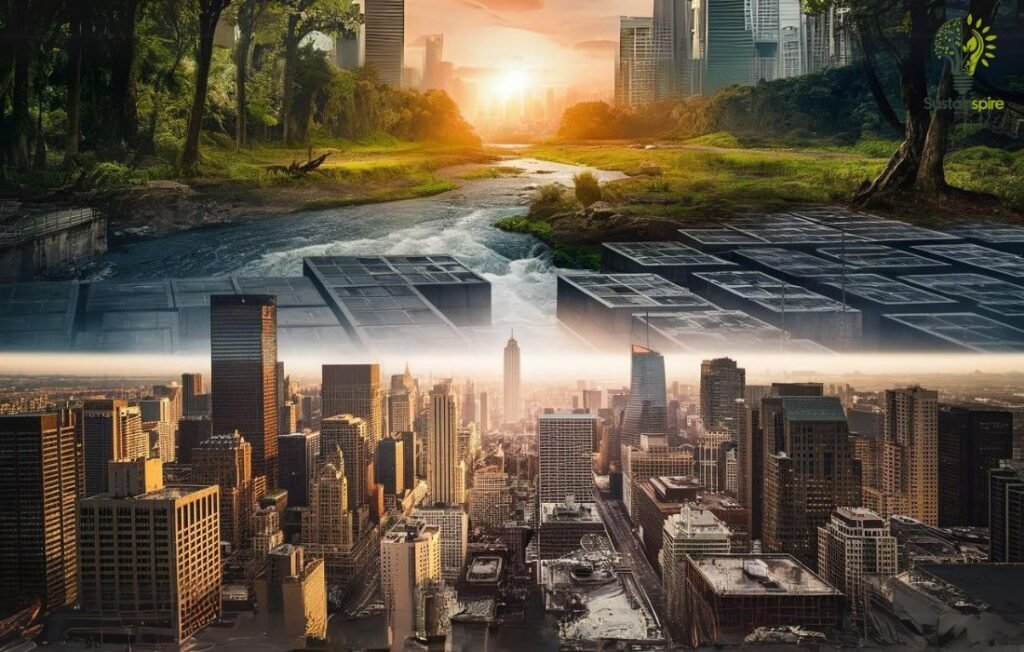
The Role of Agriculture in Shaping the Environment
Agriculture has been essential for human survival for millennia. But it has also significantly altered the environment. Clearing land for crops, using fertilizers and pesticides, and diverting water for irrigation all have profound impacts on ecosystems.
On the flip side, the environment also influences agricultural practices. For example, farmers in arid regions may adopt water-saving techniques or choose drought-resistant crops. It’s a constant dance of adaptation between humans and the environment.

Climate Change – Human Environment Interaction Definition
Climate change is perhaps the most pressing example of human impact on the environment. Our reliance on fossil fuels and deforestation have led to a rise in greenhouse gases, causing global temperatures to rise. This, in turn, leads to rising sea levels, extreme weather events, and disruptions to ecosystems worldwide. It’s a stark reminder that our actions have consequences, and we need to find sustainable solutions for the future.

Different Approaches to Studying Human Environment Interaction:
Understanding how humans and the environment interact is like solving a giant puzzle. There isn’t just one way to look at it. Moreover, different perspectives offer unique insights. Let’s explore a few key approaches:
The Geographic Perspective
Geographers are like detectives, looking for clues in the landscape. They study the where and why of things, analyzing spatial patterns and relationships between people and their environment. Think about it: why do certain cities develop along coastlines? Why are some agricultural practices more common in specific regions? Geographers use tools like maps, satellite images, and geographic information systems (GIS) to answer these questions. It’s like having a superpower to see the big picture!
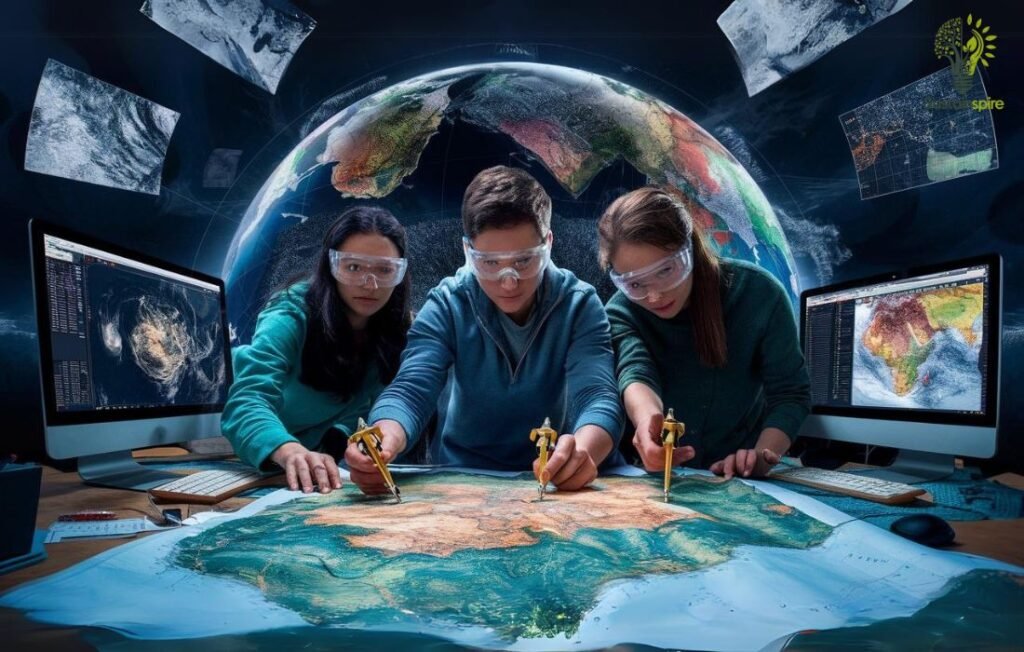
The Ecological Approach
Ecologists take a deep dive into the natural world, focusing on ecosystems and how humans impact them. They study the intricate web of relationships between living organisms and their physical surroundings. This includes analyzing the effects of pollution, deforestation, and climate change. Ecologists also explore sustainable solutions and ways to minimize our ecological footprint. After all, we’re part of nature, not separate from it, so understanding these connections is crucial.

The Social Science Lens
Social scientists bring another important perspective to the table. They explore how human societies interact with the environment, focusing on cultural values, economic systems, and political structures. This includes investigating topics like environmental justice, resource management, and the impact of development on different communities. By understanding the social and cultural factors at play, we can develop more effective and equitable solutions to environmental challenges.

How Humans Shape the Environment:
It’s no secret: that humans are major influencers when it comes to the environment. We’re not just passive observers; our actions directly impact the world around us, often in dramatic ways. Let’s explore some key areas where human activity leaves its mark.
Land Use Change and its Consequences
Human Environment Interaction Definition plays a significant role in understanding land use change and its consequences. From sprawling cities to vast agricultural fields, humans have altered natural landscapes to suit their needs. Forests are cleared for development, grasslands are converted to farmland, and wetlands are drained for construction. While these changes provide space for living and food production, they also disrupt ecosystems, reduce biodiversity, and contribute to soil erosion. It’s like playing a giant game of Jenga with the environment, and sometimes we pull out the wrong block!

Resource Extraction and Consumption Patterns
Our insatiable appetite for resources, from fossil fuels to minerals and timber, puts a strain on the planet. Mining activities scar the landscape, while deforestation disrupts natural habitats and contributes to climate change. We’re constantly digging, drilling, and harvesting, often at a pace that outstrips the environment’s ability to replenish itself.
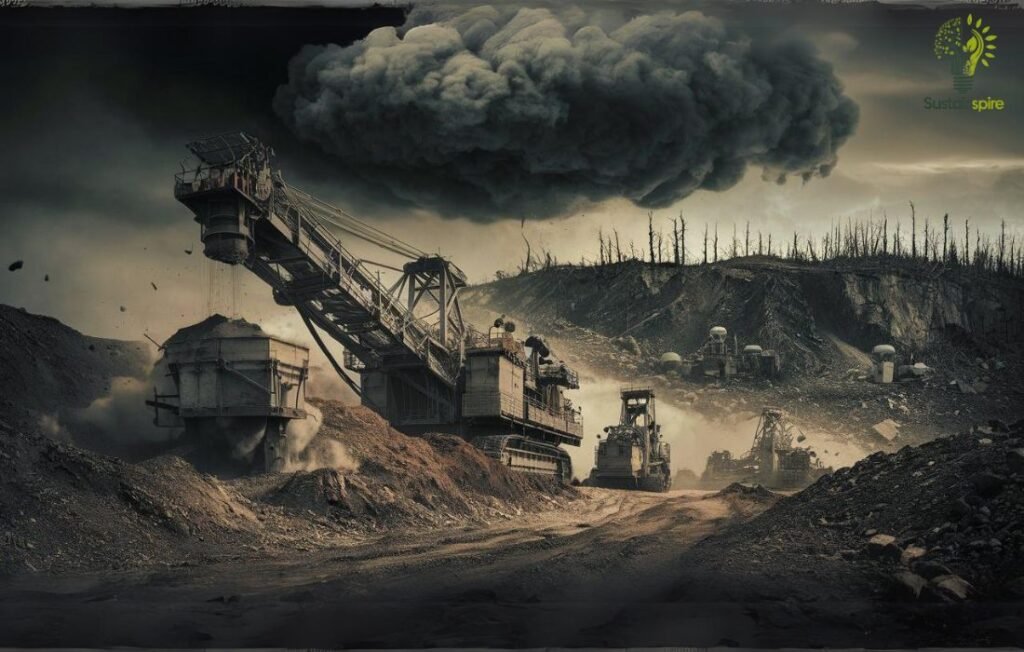
Pollution: A Growing Concern
Human activities generate a cocktail of pollutants that contaminate air, water, and soil. Industrial emissions, vehicle exhaust, and agricultural runoff all contribute to this problem. Pollution not only harms the environment but also poses serious threats to human health and well-being. It’s like we’re throwing a never-ending party for pollutants, and guess who wasn’t invited? The environment!
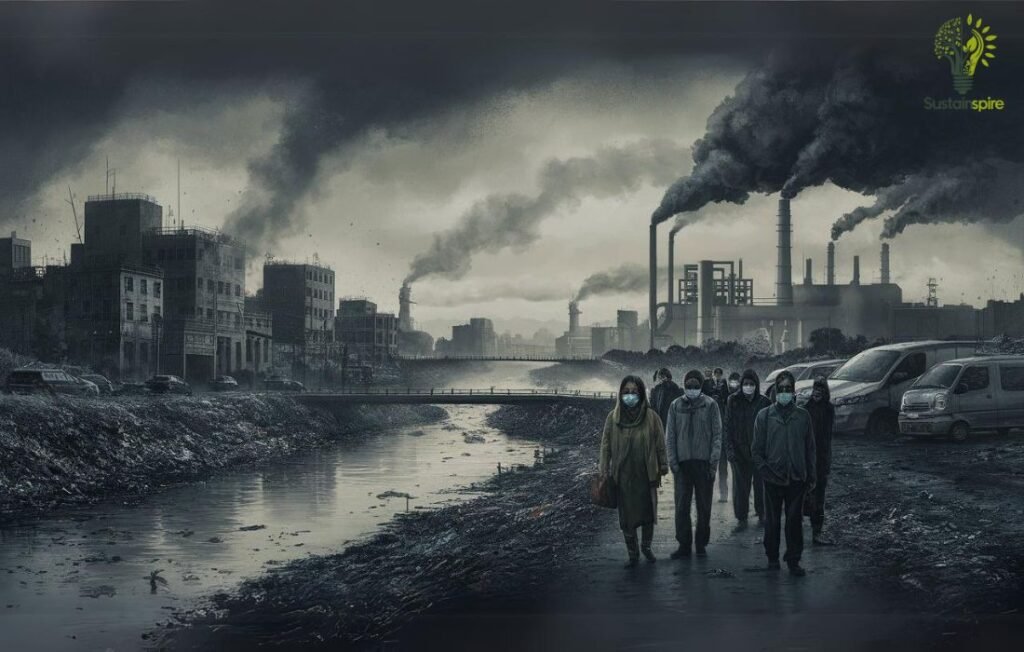
The Impact of Transportation Systems
Our need to get around has led to the development of extensive transportation networks, from sprawling highways to bustling airports. While these systems facilitate trade and travel, they also contribute to air and noise pollution, habitat fragmentation, and dependence on fossil fuels. The next time you’re stuck in traffic, think of it as a tiny contribution to human’s impact on the environment!
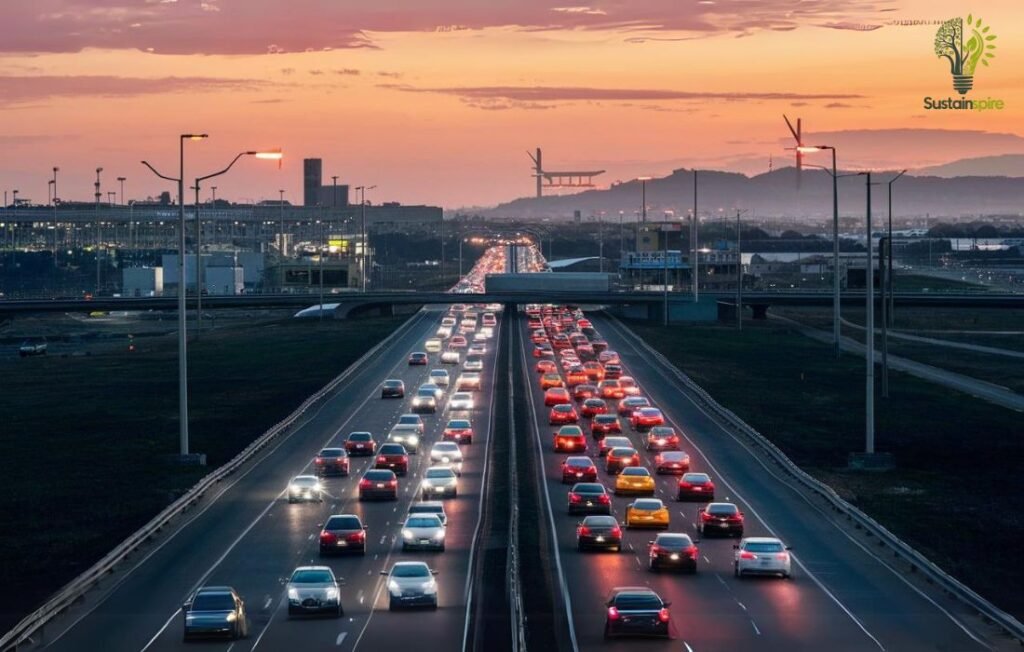
How the Environment Affects Humans:
Our environment isn’t just a pretty backdrop – it’s a powerful force that shapes our lives in countless ways. From the air we breathe to the resources we rely on, our well-being is deeply intertwined with the natural world. Let’s explore some key ways the environment impacts us:
Natural Disasters and their Impact on Communities
Mother Nature sometimes throws a curveball, and we call these curveballs “natural disasters.” Earthquakes, hurricanes, floods – these events can cause widespread destruction, displacing communities and disrupting lives. Recovering from these disasters requires resilience and often involves rebuilding infrastructure, homes, and livelihoods. It’s like playing a game of Jenga with the planet, and sometimes, the blocks tumble down in unexpected ways!
The Influence of Climate on Human Health and Well-being
The climate isn’t just about whether you need a jacket or shorts – it affects our health too. Extreme temperatures can lead to heatstroke or hypothermia, and changing weather patterns can influence the spread of diseases. Air pollution, often linked to industrial activities, can cause respiratory problems and other health issues. So, the next time you complain about the weather, remember it’s not just about bad hair days – it’s about our health too!
Access to Natural Resources and its Effect on Societies
From the water we drink to the energy we use, natural resources are the building blocks of our societies. When these resources are scarce or unevenly distributed, it can lead to conflict and instability. Sustainable management of resources is crucial for ensuring a healthy environment and thriving communities. After all, we can’t build a future on an empty tank!
Striking a Balance: Sustainable Human Environment Interaction:
Finding harmony between human activities and environmental preservation is crucial for a healthy planet and a thriving society. This balance ensures we meet present needs without compromising the ability of future generations to meet their own. Let’s explore key aspects of achieving this balance:
The Importance of Environmental Conservation
Protecting our environment is not just about saving polar bears or rainforests; it’s about safeguarding the very systems that support life on Earth. Clean air, water, and fertile land are essential for human health and well-being. Biodiversity, the variety of life on Earth, plays a vital role in maintaining ecological balance. Environmental conservation efforts, like reducing pollution and protecting natural habitats, are crucial in maintaining this delicate balance. Understanding Human Environment Interaction Definition is crucial for appreciating the importance of environmental conservation.
Sustainable Development Goals and Initiatives
The United Nations’ Sustainable Development Goals (SDGs) provide a framework for achieving a more sustainable future. These 17 goals address global challenges, including poverty, hunger, climate change, and environmental degradation. Many initiatives around the world are working towards these goals, promoting sustainable practices in various sectors such as energy, agriculture, and urban development.
Promoting Environmental Awareness and Education
Knowledge is power! Raising awareness about environmental issues is key to fostering a sense of responsibility and inspiring action. Education plays a crucial role in shaping attitudes and behaviors. By teaching individuals about the environment and the impact of human activities, we empower them to make informed choices and contribute to a more sustainable future. Remember, even small changes can make a big difference!
Individual Actions for a Collective Impact
Sustainability is not just the responsibility of governments and organizations; it’s something we can all contribute to. Simple actions like reducing waste, conserving water and energy, choosing sustainable products, and supporting eco-friendly businesses can collectively make a significant impact. Let’s remember, we’re all in this together!
The Future of Human Environment Interaction:
As we move forward, our relationship with the environment will continue to evolve in fascinating ways. Understanding these changes is crucial for navigating the challenges and opportunities that lie ahead. Besides human environment interaction definition let’s explore some key areas shaping the future of human-environment interaction.
Emerging Challenges and Opportunities
Our planet faces pressing issues like climate change, resource depletion, and pollution. These challenges demand innovative solutions that balance human needs with environmental sustainability. Finding ways to mitigate climate change, adopt renewable energy sources, and promote responsible consumption are crucial for a healthy planet and future.
However, challenges often breed opportunities. The growing awareness of environmental issues has sparked a wave of eco-conscious innovations. From sustainable agriculture and green building design to circular economies and waste reduction technologies, the future holds immense potential for positive change.
Technological Advancements and their Role
Technology plays a pivotal role in shaping our interactions with the environment. Advancements in areas like renewable energy, smart grids, and precision agriculture offer promising solutions for sustainable resource management. Additionally, data analysis and environmental monitoring tools provide valuable insights into ecosystem health and help us make informed decisions. Remember, with great power comes great responsibility – it’s essential to ensure these technologies are used ethically and responsibly.
Building a Sustainable Future for All
Creating a sustainable future requires a collective effort. Governments, businesses, communities, and individuals all have a part to play. Fostering environmental education and awareness is crucial for promoting responsible behaviors and encouraging participation in sustainability initiatives. By working together and embracing innovative solutions, we can build a future where both human society and the environment thrive.
Conclusion:
Understanding the concept of human environment interaction definition is crucial in today’s world. It helps us grasp the complex relationship between people and their surroundings, both natural and built. As we’ve explored, this interaction is a two-way street. We impact the environment through our actions, and in turn, the environment shapes our lives and societies.
Remember, it’s not just about the big, dramatic changes; even small, everyday choices can collectively make a significant difference. Choosing to recycle, conserve water, or use public transportation are prime examples of how individual actions contribute to a larger impact. Think of it like the butterfly effect, but with less chaos and more positive outcomes!
We encourage you to explore further into this topic and explore how you can contribute to a more sustainable and peaceful relationship with our planet. Share this information with your friends and family, and let’s work together to create a better future for ourselves and generations to come. After all, we only have one Earth, and it deserves all the love and care we can give!







One thought on “Understanding the Human Environment Interaction Definition”